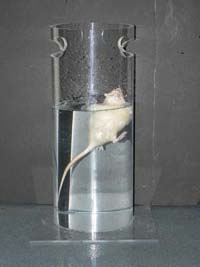|
Nobiletin
Nobiletin is a flavonoid isolated from citrus peels. It is an ''O''-methylated flavone that has the activity to rescue bulbectomy-induced memory impairment. Potential pharmacology Nobiletin was found to potentially inhibit cartilage degradation. Nobiletin was shown to augment AMPA receptor activity and long-term potentiation in cell culture. Synergistic chemopreventive effects of nobiletin and atorvastatin Atorvastatin is a statin medication used to prevent cardiovascular disease in those at high risk and to treat abnormal lipid levels. For the prevention of cardiovascular disease, statins are a first-line treatment. It is taken by mouth. Common ... on colon carcinogenesis have been described. References External links Nobiletin phytochemicals.info O-methylated flavones Flavonoids found in Rutaceae {{Aromatic-stub ... [...More Info...] [...Related Items...] OR: [Wikipedia] [Google] [Baidu] |
O-methylated Flavone
The O-methylated flavonoids or methoxyflavonoids are flavonoids with methylations on hydroxyl groups (methoxy bonds). O-methylation has an effect on the solubility of flavonoids. Enzymes O-methylated flavonoids formation implies the presence of specific O-methyltransferase An O-methyltransferase (OMT) is a type of methyltransferase enzyme transferring a methyl group on a molecule. Examples are : * Acetylserotonin O-methyltransferase * Apigenin 4'-O-methyltransferase * Caffeate O-methyltransferase * Caffeoyl-CoA ... (OMT) enzymes which accept a variety of substrates. Those enzymes mediate the O-methylation on a specific hydroxyl group, like on 4' (example in ''Catharanthus roseus'') or 3' (example in rice) positions. Those positions can be Arene substitution patterns, ortho, meta, para and there can be a special 3-O-methyltransferase for the 3-OH position. Calamondin orange (''Citrus mitis'') exhibits all of those activities. Plant enzymes * Apigenin 4'-O-methyltransferase * 8 ... [...More Info...] [...Related Items...] OR: [Wikipedia] [Google] [Baidu] |
Flavonoid
Flavonoids (or bioflavonoids; from the Latin word ''flavus'', meaning yellow, their color in nature) are a class of polyphenolic secondary metabolites found in plants, and thus commonly consumed in the diets of humans. Chemically, flavonoids have the general structure of a 15-carbon skeleton, which consists of two phenyl rings (A and B) and a heterocyclic ring (C, the ring containing the embedded oxygen). This carbon structure can be abbreviated C6-C3-C6. According to the IUPAC nomenclature, they can be classified into: *flavonoids or bioflavonoids *isoflavonoids, derived from 3-phenyl chromen-4-one (3-phenyl-1,4-benzopyrone) structure *neoflavonoids, derived from 4-phenylcoumarine (4-phenyl-1,2-benzopyrone) structure The three flavonoid classes above are all ketone-containing compounds and as such, anthoxanthins ( flavones and flavonols). This class was the first to be termed bioflavonoids. The terms flavonoid and bioflavonoid have also been more loosely used to describe non ... [...More Info...] [...Related Items...] OR: [Wikipedia] [Google] [Baidu] |
Citrus Peel
Peel, also known as rind or skin, is the outer protective layer of a fruit or vegetable which can be peeled off. The rind is usually the botanical exocarp, but the term exocarp also includes the hard cases of nuts, which are not named peels since they are not peeled off by hand or peeler, but rather shells because of their hardness. A fruit with a thick peel, such as a citrus fruit, is called a hesperidium. In hesperidia, the inner layer (also called ''albedo'' or, among non-botanists, ''pith'') is peeled off together with the outer layer (called flavedo), and together they are called the peel. The flavedo and albedo, respectively, are the exocarp and the mesocarp. The juicy layer inside the peel (containing the seeds) is the endocarp. Uses Depending on the thickness and taste, fruit peel is sometimes eaten as part of the fruit, such as with apples. In some cases the peel is unpleasant or inedible, in which case it is removed and discarded, such as with bananas or grapefrui ... [...More Info...] [...Related Items...] OR: [Wikipedia] [Google] [Baidu] |
Bulbectomy
Animal models of depression are research tools used to investigate depression and action of antidepressants as a simulation to investigate the symptomatology and pathophysiology of depressive illness or used to screen novel antidepressants. Introduction Depression Major depressive disorder, also called "clinical depression" or often simply "depression", is a common, long-lasting and diverse psychiatric syndrome that significantly affects a person's thoughts, behavior, feelings and sense of well-being. Symptoms include low mood and aversion to activity. Depressed people may also feel sad, anxious, empty, hopeless, worried, helpless, worthless, guilty, irritable, hurt, or restless. They may lose interest in activities that once were pleasurable, experience loss of appetite or overeating, have problems concentrating, remembering details, or making decisions, and may contemplate or attempt suicide. Insomnia, excessive sleeping, fatigue, loss of energy, or aches, pains, or digesti ... [...More Info...] [...Related Items...] OR: [Wikipedia] [Google] [Baidu] |
AMPA Receptor
The α-amino-3-hydroxy-5-methyl-4-isoxazolepropionic acid receptor (also known as AMPA receptor, AMPAR, or quisqualate receptor) is an ionotropic receptor, ionotropic transmembrane receptor for glutamate (iGluR) that mediates fast synapse, synaptic transmission in the central nervous system (CNS). It has been traditionally classified as a non-NMDA_receptor, NMDA-type receptor, along with the kainate receptor. Its name is derived from its ability to be activated by the artificial glutamate analog AMPA. The receptor was first named the "quisqualate receptor" by Watkins and colleagues after a naturally occurring agonist quisqualic acid, quisqualate and was only later given the label "AMPA receptor" after the selective agonist developed by Tage Honore and colleagues at the Royal Danish School of Pharmacy in Copenhagen. The ''GRIA2''-encoded AMPA receptor ligand binding core (GluA2 LBD) was the first glutamate receptor ion channel domain to be protein crystal, crystallized. Structure ... [...More Info...] [...Related Items...] OR: [Wikipedia] [Google] [Baidu] |
Atorvastatin
Atorvastatin is a statin medication used to prevent cardiovascular disease in those at high risk and to treat abnormal lipid levels. For the prevention of cardiovascular disease, statins are a first-line treatment. It is taken by mouth. Common side effects include joint pain, diarrhea, heartburn, nausea, and muscle pains. Serious side effects may include rhabdomyolysis, liver problems, and diabetes. Use during pregnancy may harm the fetus. Like all statins, atorvastatin works by inhibiting HMG-CoA reductase, an enzyme found in the liver that plays a role in producing cholesterol. Atorvastatin was patented in 1986, and approved for medical use in the United States in 1996. It is on the World Health Organization's List of Essential Medicines. It is available as a generic medication. In 2020, it was the most commonly prescribed medication in the United States, with more than 114million prescriptions. Medical uses The primary uses of atorvastatin is for the treatment of dyslipide ... [...More Info...] [...Related Items...] OR: [Wikipedia] [Google] [Baidu] |
Colon Cancer
Colorectal cancer (CRC), also known as bowel cancer, colon cancer, or rectal cancer, is the development of cancer from the colon or rectum (parts of the large intestine). Signs and symptoms may include blood in the stool, a change in bowel movements, weight loss, and fatigue. Most colorectal cancers are due to old age and lifestyle factors, with only a small number of cases due to underlying genetic disorders. Risk factors include diet, obesity, smoking, and lack of physical activity. Dietary factors that increase the risk include red meat, processed meat, and alcohol. Another risk factor is inflammatory bowel disease, which includes Crohn's disease and ulcerative colitis. Some of the inherited genetic disorders that can cause colorectal cancer include familial adenomatous polyposis and hereditary non-polyposis colon cancer; however, these represent less than 5% of cases. It typically starts as a benign tumor, often in the form of a polyp, which over time becomes cancerous. ... [...More Info...] [...Related Items...] OR: [Wikipedia] [Google] [Baidu] |



